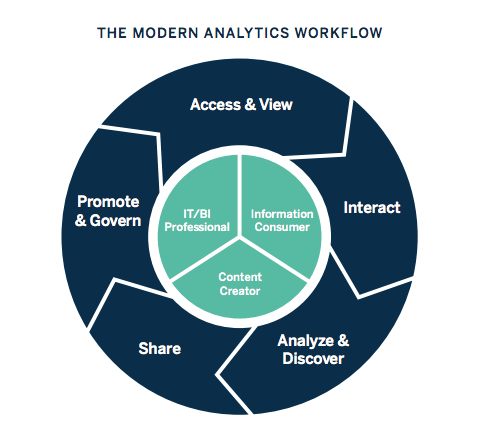Business intelligence: A complete overview
Mục Lục
How business intelligence works

Businesses and organizations have questions and goals. To answer these questions and track performance against these goals, they gather the necessary data, analyze it, and determine which actions to take to reach their goals.
On the technical side, raw data is collected from business systems. Data is processed and then stored in data warehouses, the cloud, applications, and files. Once it’s stored, users can access the data, starting the analysis process to answer business questions.
BI platforms also offer data visualization tools, which convert data into charts or graphs, as well as presenting to any key stakeholders or decision-makers.
BI methods
Much more than a specific “thing,” business intelligence is an umbrella term that covers the processes and methods of collecting, storing, and analyzing data from business operations or activities to optimize performance. All of these things come together to create a comprehensive view of a business to help people make better, actionable decisions. Over the past few years, business intelligence has evolved to include more processes and activities to help improve performance. These processes include:
- Data mining: Using databases, statistics, and machine learning (ML) to uncover trends in large datasets
- Reporting: Sharing data analysis to stakeholders so they can draw conclusions and make decisions
- Performance metrics and benchmarking: Comparing current performance data to historical data to track performance against goals, typically using customized dashboards
- Descriptive analytics: Using preliminary data analysis to find out what happened
- Querying: Asking the data-specific questions, BI pulling the answers from the data sets
- Statistical analysis: Taking the results from descriptive analytics and further exploring the data using statistics such as how this trend happened and why
- Data visualization: Turning data analysis into visual representations such as charts, graphs, and histograms to more easily consume data
- Visual analysis: Exploring data through visual storytelling to communicate insights on the fly and stay in the flow of analysis
- Data preparation: Compiling multiple data sources, identifying the dimensions and measurements, and preparing it for data analysis
How BI, data analytics, and business analytics work together
Business intelligence includes data analytics and business analytics but uses them only as parts of the whole process. BI helps users draw conclusions from data analysis. Data scientists dig into the specifics of data, using advanced statistics and predictive analytics to discover patterns and forecast future patterns.
Data analytics asks, “Why did this happen and what can happen next?” Business intelligence takes those models and algorithms and breaks the results down into actionable language. According to Gartner’s IT glossary, “business analytics includes data mining, predictive analytics, applied analytics, and statistics.” In short, organizations conduct business analytics as part of their larger business intelligence strategy.
BI is designed to answer specific queries and provide at-a-glance analysis for decisions or planning. However, companies can use the processes of analytics to continually improve follow-up questions and iteration. Business analytics shouldn’t be a linear process because answering one question will likely lead to follow-up questions and iteration. Rather, think of the process as a cycle of data access, discovery, exploration, and information sharing. This is called the cycle of analytics, a modern term explaining how businesses use analytics to react to changing questions and expectations.
The difference between traditional BI and modern BI

Modern BI prioritizes self-service analytics and speed to insight.
Historically, business intelligence tools were based on a traditional business intelligence model. This was a top-down approach where business intelligence was driven by the IT organization and most, if not all, analytics questions were answered through static reports. This meant that if someone had a follow-up question about the report they received, their request would go to the bottom of the reporting queue and they would have to start the process over again. This led to slow, frustrating reporting cycles, and people weren’t able to leverage current data to make decisions.
Traditional business intelligence is still a common approach for regular reporting and answering static queries. However, modern business intelligence is interactive and approachable. While IT departments are still an important part of managing access to data, multiple levels of users can customize dashboards and create reports on little notice. With the proper software, users are empowered to visualize data and answer their own questions.















![Toni Kroos là ai? [ sự thật về tiểu sử đầy đủ Toni Kroos ]](https://evbn.org/wp-content/uploads/New-Project-6635-1671934592.jpg)


